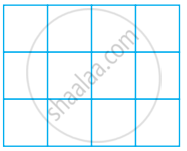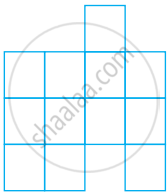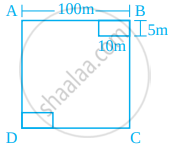Advertisements
Advertisements
प्रश्न
In the given figure, Area of (i) is the same as the area of (ii)
 |
 |
| (i) | (ii) |
विकल्प
True
False
उत्तर
This statement is True.
Explanation:
 |
 |
| (i) | (ii) |
By observing the figure, we can say that area of both figures are same because number of blocks used in both figures are same.
APPEARS IN
संबंधित प्रश्न
The diagonal of a square is 15 m; find the length of its one side and perimeter.
The table given below contains some measures of the square. Find the unknown values.
| Side | Perimeter | Area |
| 6 cm | ? | ? |
The table given below contains some measures of the square. Find the unknown values.
| Side | Perimeter | Area |
| ? | 100 m | ? |
The side of a square is 10 cm. If its side is tripled, then by how many times will its perimeter increase?
Sanju completes 10 rounds around a square park every day. If one side of the park is 110 m, then find the distance covered by Sanju in a day in terms of kilometers and meters
Find the perimeter of the following figure

Measure the side of the red square on the dotted sheet. Draw here as many rectangles as possible using 12 such squares.
How many rectangles could you make?
A square shaped park ABCD of side 100m has two equal rectangular flower beds each of size 10m × 5m (Figure). Length of the boundary of the remaining park is ______.
The perimeter of a square garden is 48 m. A small flower bed covers 18 sq m area inside this garden. What is the area of the garden that is not covered by the flower bed? What fractional part of the garden is covered by flower bed? Find the ratio of the area covered by the flower bed and the remaining area.
A piece of string is 30 cm long. What will be the length of each side if the string is used to form a square?
